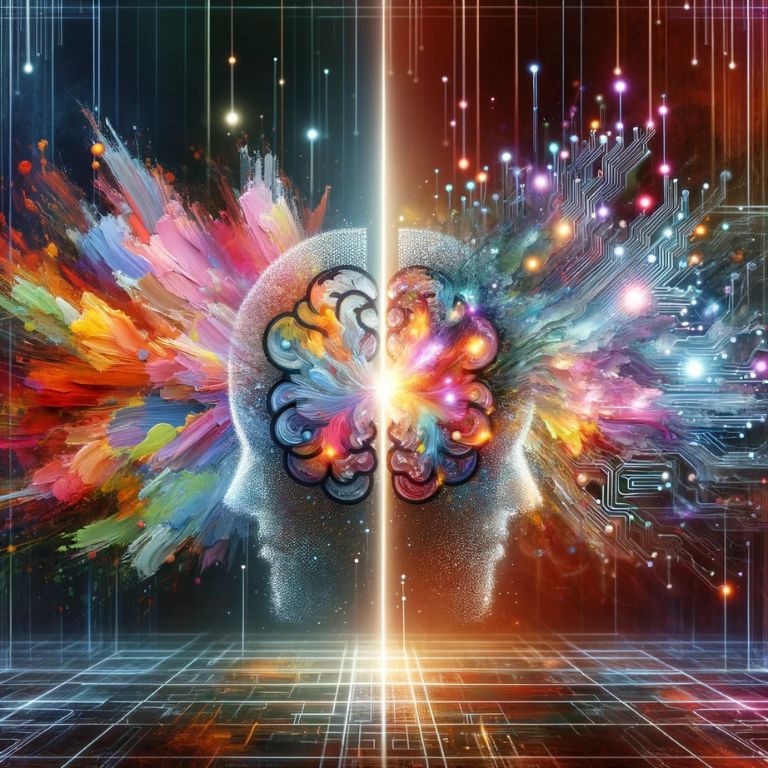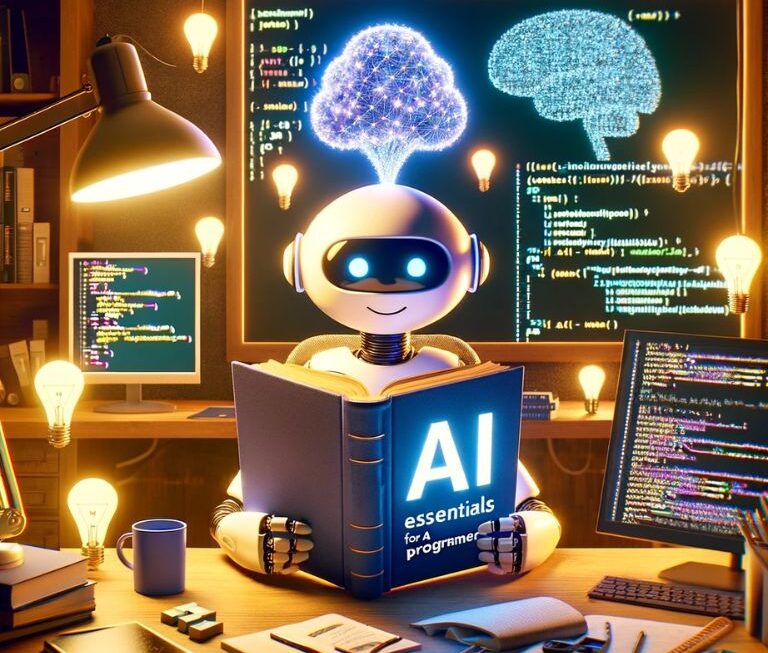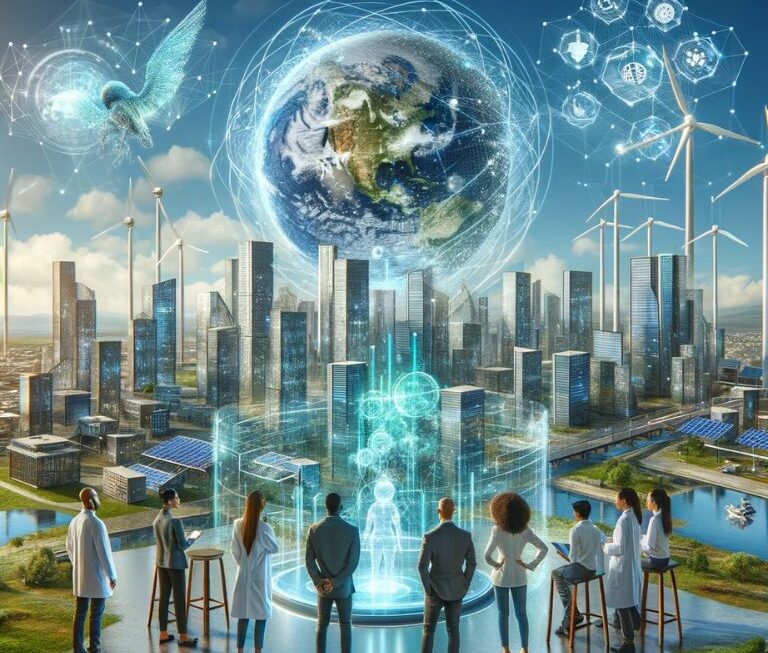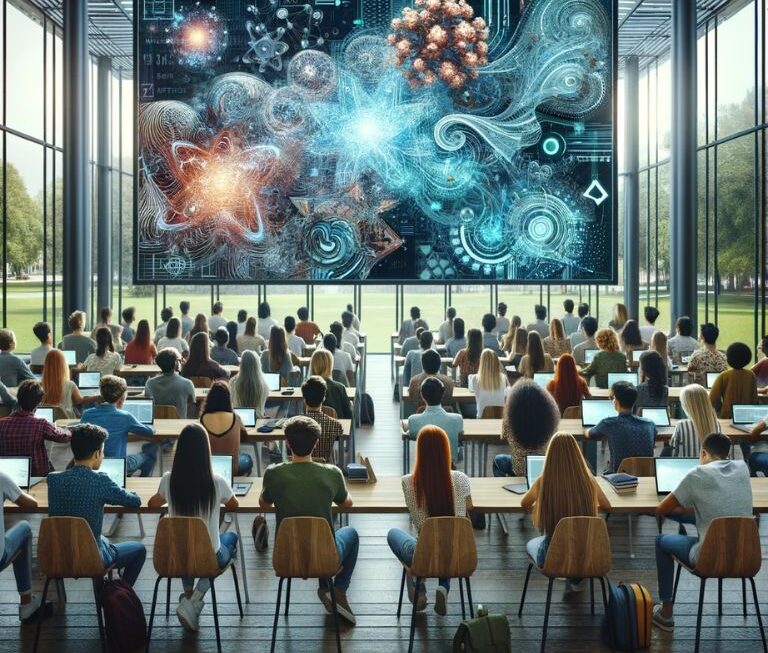In the labyrinth of technological advancements, Generative Artificial Intelligence (AI) stands as a beacon of innovation, reshaping the landscape of creativity and design. This emerging technology, rooted in complex algorithms and learning models, has the power to create content that was once the sole domain of human intellect and imagination. However, it’s imperative to understand that this digital revolution does not diminish the value of human creativity; rather, it opens new avenues for collaboration and innovation.
Understanding Generative AI
Generative AI refers to a subset of artificial intelligence that focuses on creating new content, ranging from text and images to music and more. This technology is primarily powered by advanced machine learning models like neural networks, which learn from vast datasets to generate new, original outputs. Unlike traditional AI, which is programmed to follow specific rules, generative AI learns patterns and mimics styles, making it a potent tool for creative tasks.
Defining Human Creativity in the Digital Age
Human creativity is an innate, intangible quality that transcends mere skill or knowledge. It’s the ability to conceive something novel or original, stemming from an individual’s experiences, emotions, and perceptions. In the digital age, human creativity continues to be the cornerstone of innovation. It’s not just about generating new ideas but also about critical thinking, problem-solving, and emotional intelligence — aspects that AI has yet to fully replicate.
Overview of the Interplay Between AI and Human Innovation
The relationship between Generative AI and human creativity is not one of replacement but of enhancement and collaboration. While AI can process and generate content at an unprecedented scale, it lacks the nuanced understanding and emotional depth that humans bring to creative endeavors. This synergy of human intuition and AI’s computational power paves the way for groundbreaking innovations and solutions.
| Aspect | Human Creativity | Generative AI |
| Nature | Intuitive, emotional, and original | Data-driven, pattern-based, and scalable |
| Strengths | Critical thinking, problem-solving | High-speed data processing, pattern replication |
| Limitations | Time and resource constraints | Lack of emotional depth, reliance on existing data |
| Role in Innovation | Idea generation, emotional resonance | Speed, efficiency, and scalability in execution |
The History and Evolution of AI in Creative Processes
Tracing the Development of AI from Early Algorithms to Generative Models
The evolution of AI in creative processes is a journey marked by significant milestones:
- 1950s-60s: Early Experiments – AI in creativity began with basic algorithm-based programs.
- 1980s: Rule-Based Systems – Rule-based systems allowed for more complex AI applications in design and music.
- Late 1990s: Machine Learning Emergence – Machine learning emerged, enabling AI to learn from data.
- 2010s: Deep Learning Revolution – Deep learning and neural networks revolutionized AI for creativity.
- 2020s: Generative AI – Generative AI models like GPT and DALL-E produce complex creative works today.
Milestones in AI’s Role in Creative Industries
AI’s integration in creative industries is transformative, blurring the line between human and AI-made art in painting, composing music across genres, and enhancing scripts. It showcases AI’s versatility and its role as a collaborative tool, reshaping how art is conceived, created, and perceived. This partnership heralds a new era of digital creativity infused with human emotion and intelligence.
Human Creativity: The Irreplaceable Element
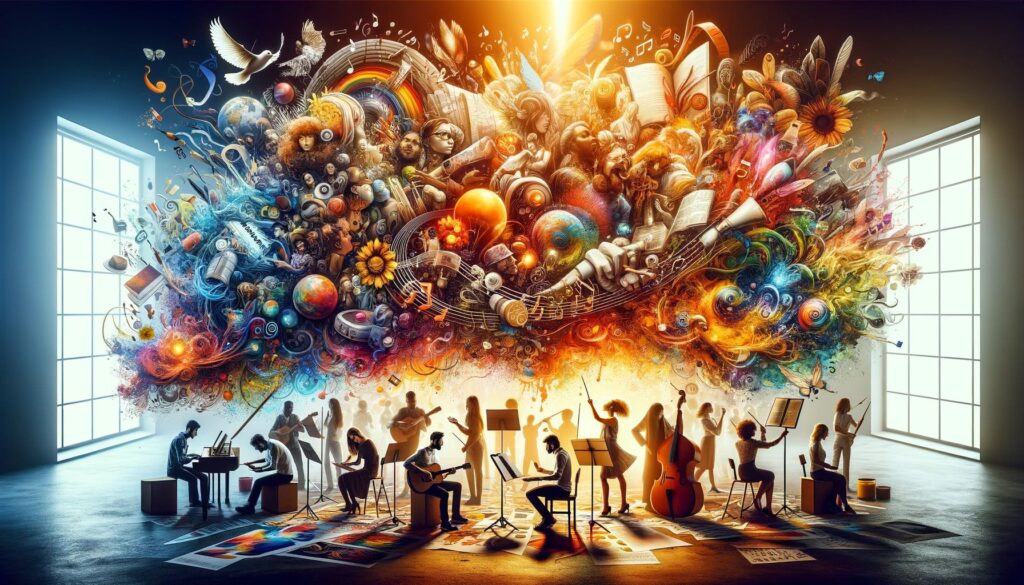
Analyzing the Unique Qualities of Human Creativity
Human creativity possesses qualities that distinguish it from AI-generated content:
- Emotional Depth – Human-created art carries emotional depth, reflecting personal experiences, making it relatable for audiences.
- Contextual Richness – Humans use cultural and personal experiences to create context-rich content.
- Intuition and Serendipity – Creativity stems from intuition and serendipity, challenging for AI to replicate.
- Originality and Innovation – Human creativity thrives on originality and innovation, pushing boundaries.
Examples of Creative Endeavors Where Human Intuition Played a Vital Role
In literature, Shakespeare, Tolstoy, and Toni Morrison created timeless works with universal themes. In visual arts, Leonardo da Vinci’s Mona Lisa reflects his profound understanding of human anatomy and emotion. These cases underscore human intuition and creativity’s irreplaceable role in cultural icons. While AI aids, the human touch infuses art with soul, an indispensable element in innovation and expression.
Generative AI: Enhancing Human Creativity, Not Replacing It
Exploring How AI Tools Augment Human Creativity
Generative AI, with its ability to process vast amounts of data and generate content rapidly, plays a pivotal role in enhancing human creativity. It serves as a powerful tool that complements and amplifies the creative capabilities of individuals and industries.
Real-World Examples of AI-Assisted Creative Projects
- Art and Design – Graphic designers use AI to quickly explore diverse design possibilities.
- Music Composition – Musicians collaborate with AI to create innovative compositions and soundscapes.
- Content Generation – Content creators use AI to automate tasks, allowing for more creative work.
- Film and Animation – AI streamlines production processes and enhances creativity in the film industry.
- Gaming – Game developers employ AI for dynamic in-game content and lifelike environments.
- Healthcare and Scientific Research – AI helps scientists analyze complex data for groundbreaking discoveries.
Collaborative Innovations: When Humans and AI Work Together

Insights into Successful Collaborations Between Humans and AI in Various Fields
- Medicine – AI aids healthcare professionals in interpreting medical images for faster and more accurate diagnoses.
- Finance – Financial analysts use AI to analyze market trends for data-driven investment decisions.
- Environmental Conservation – Ecologists use AI to monitor wildlife and environmental changes for conservation efforts.
- Language Translation – AI-powered translation services break down language barriers.
- Automotive – Self-driving cars and AI-assisted safety features improve road safety.
The Impact of These Collaborations on Innovation and Productivity
The collaborations between humans and AI are catalysts for innovation and productivity in various industries. These partnerships allow professionals to leverage AI’s data processing capabilities, enabling them to make more informed decisions and solve complex problems more efficiently. By automating routine tasks and providing valuable insights, AI liberates human creativity and cognitive capacity, enabling individuals and organizations to focus on high-level, strategic endeavors. The result is a landscape of continuous innovation and increased productivity that benefits society as a whole, redefining the possibilities of what can be achieved when human ingenuity meets AI-powered assistance.
Ethical Considerations and Future Implications
Addressing the Ethical Dilemmas in the Realm of AI and Creativity
The integration of AI into creative processes brings forth a host of ethical considerations. As AI becomes increasingly proficient at generating creative content, questions about authorship, intellectual property, and the potential for bias in AI-generated content emerge. It is imperative that we address these dilemmas by establishing ethical guidelines and legal frameworks that govern AI’s role in creative endeavors. Transparency, accountability, and responsible use of AI must be at the forefront of our approach to ensure that creativity remains a force for good in society.
Predictions for the Future of Human-AI Creative Partnerships
Looking ahead, the future of human-AI creative partnerships is promising. We can anticipate:
- AI Collaboration – AI will become an integral part of creative processes, assisting in content creation and offering suggestions.
- Enhanced Creativity – Human-AI partnerships will foster new forms of creativity, blending human intuition with AI’s computational capabilities.
- AI Ethics – Stricter regulations will focus on ethical AI use in creative industries to ensure fair use and attribution.
- AI in Education – AI will aid in developing students’ creative skills and enhance personalized teaching for educators.
- Cross-Disciplinary Collaboration – Experts from various fields will harness AI for innovative solutions, breaking traditional boundaries.
- AI-Driven Art – New AI-enabled art movements may challenge our understanding of creativity and expression.
Conclusion
The intricate dance between human creativity and Generative AI illuminates a path forward, where collaboration transcends competition. AI excels in content generation, but human creativity imbues works with meaning, emotion, and a profound human connection. Instead of fearing AI’s rise, we should embrace it as a tool to explore uncharted creative realms, liberating us from repetitive tasks and expanding our imaginative horizons. At the intersection of human ingenuity and AI, a future of harmonious coexistence emerges, promising unparalleled innovation across art, science, and all facets of human endeavor. In this symbiosis, creativity knows no bounds, elevating the human spirit and redefining creators in the age of Generative AI.

